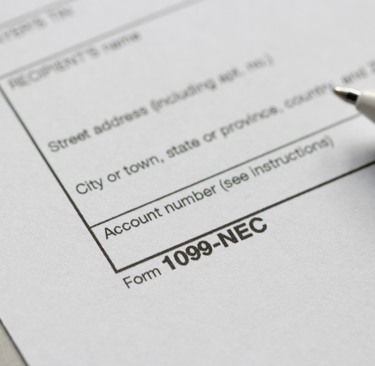Do You Need to Issue a 1099? Here’s How to Know
Not sure if you need to issue a 1099? This guide breaks down the essentials of when and to whom you need to issue 1099 forms. Learn the key criteria, payment types, exceptions, and deadlines to stay IRS-compliant and avoid penalties. Simplify your tax season with clear and actionable steps!
1099 FORMS
Lena Hanna
1/12/20253 min read


When tax season rolls around, one of the most common questions business owners face is: “Do I need to issue a 1099?” Navigating the rules around 1099 forms can feel overwhelming, but it’s an essential part of staying compliant with IRS regulations. This guide will help you determine when and to whom you need to issue a 1099, ensuring your business avoids unnecessary penalties.
What is a 1099 Form?
A 1099 form is a tax document used to report payments made to independent contractors and certain other entities. The most common version is the 1099-NEC (Non-Employee Compensation), which is used to report payments made to contractors or freelancers for services provided. Essentially, if you’ve hired someone to complete work for your business and they aren’t an employee, you may need to issue them a 1099.
Who Needs to Issue a 1099?
To determine if you need to issue a 1099, consider the following key criteria:
Payment Amount: You must issue a 1099 if you’ve paid $600 or more to a vendor or contractor during the tax year.
Nature of the Work: The payment must be for services (not goods or products) performed for your business.
Additionally, a 1099 is generally required for payments made to:
Independent contractors and freelancers.
Sole proprietors or single-member LLCs.
Attorneys, regardless of their business structure.
Types of Payments That Require a 1099
Here are some common examples of payments that require a 1099:
Payments to independent contractors for services (e.g., graphic design, marketing, or consulting).
Rent payments to landlords or property owners.
Payments to attorneys or law firms, even if they operate as corporations.
Royalty payments totaling $10 or more.
When a 1099 is Not Required
There are specific situations where a 1099 is not necessary, including:
Employee Payments: Payments to employees are reported on a W-2 form, not a 1099.
Payments to Corporations: Generally, payments to C or S corporations do not require a 1099, except for legal and medical services.
Small Payments: Payments totaling less than $600 in a tax year.
How to Determine If You Should Issue a 1099
Follow these steps to determine whether issuing a 1099 is necessary:
Review Your Records: Look through your payment history to identify vendors or contractors who provided services.
Check the $600 Threshold: If the total payments to an individual or business reached $600 or more, you likely need to issue a 1099.
Confirm Business Structure: Request a completed W-9 form from the contractor to verify their business structure and obtain their Taxpayer Identification Number (TIN).
What Information Do You Need to Issue a 1099?
Before issuing a 1099, you’ll need to gather the following information from the contractor or vendor:
Legal name or business name.
Taxpayer Identification Number (TIN or EIN).
Address.
This information should be collected using a W-9 form at the start of your working relationship to streamline the process.
Deadlines to Keep in Mind
Timeliness is critical when it comes to issuing 1099 forms. Here are the key deadlines:
January 31: Issue 1099 forms to recipients.
January 31: File 1099 forms with the IRS if submitting electronically (or February 28 for paper filings).
Failing to meet these deadlines can result in penalties ranging from $50 to $280 per form, depending on how late you are.
How to Issue a 1099
Here’s how you can issue a 1099:
Prepare the Forms: Obtain official 1099 forms from the IRS or an authorized provider.
Fill Out the Information: Include the contractor’s name, TIN, payment amount, and other required details.
Submit to the IRS: File the form electronically using tax software or mail a paper copy to the IRS.
Send to the Contractor: Provide a copy of the 1099 to the contractor by the January 31 deadline.
Issuing a 1099 doesn’t have to be daunting if you understand the requirements and deadlines. By keeping accurate records, collecting W-9 forms early, and staying on top of your obligations, you can ensure compliance with IRS regulations and avoid costly penalties. Whether you’re working with local contractors or remote freelancers, issuing 1099s is a vital part of running a successful business.
